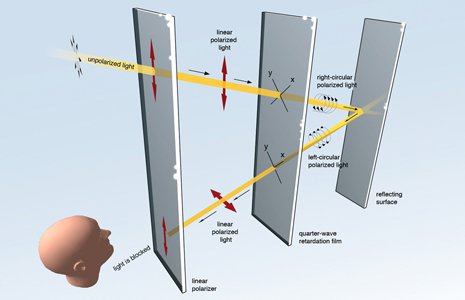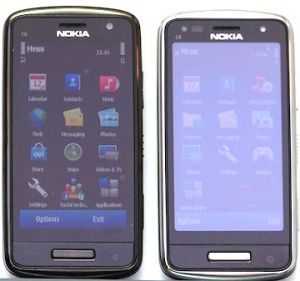Nokia's ClearBlack Display technology has been announced in September 2010, and Nokia is using it in several phones (including the Lumia 900, Lumia 800 and older Symbian models such as the X7 and E7). We know that it includes polarizing filters to block incoming light. Today however Nokia finally revealed how it actually works:

A CBD filter includes both a linear polariser and retardation layers between the surface of your phone and the display. When light hits your screen, this is what happens:
- It hits the linear polariser, this vertically polarises the light. (Polarising means roughly aligning the wave vibration in a particular direction).
- Then it hits the circular polariser retardation layer. This converts the light again, making it right-circularly polarised.
- Then it hits the screen and bounces off it, switching the rotation of the light to leftist.
- It goes back through the retardation layer. When this happens, the light becomes horizontally polarised.
- Finally, it hits the linear polariser, since the light is horizontally polarised at this point it can be blocked entirely by this optical solution.
So why doesn't the light from your phone’s display get blocked? Because it only goes through the second half of this journey so the light is unpolarised when it hits the final filter and goes through. In the photo below, we can see a normal C6-01 phone with a CBD display (on the left) and the same phone without the CBD layer (on the right):

Samsung also have a technology that reduces reflections - Super AMOLED displays which uses an on-cell touch layer. Apparently a Super-AMOLED and a CBD on AMOLED behave pretty much the same under direct sunlight.

